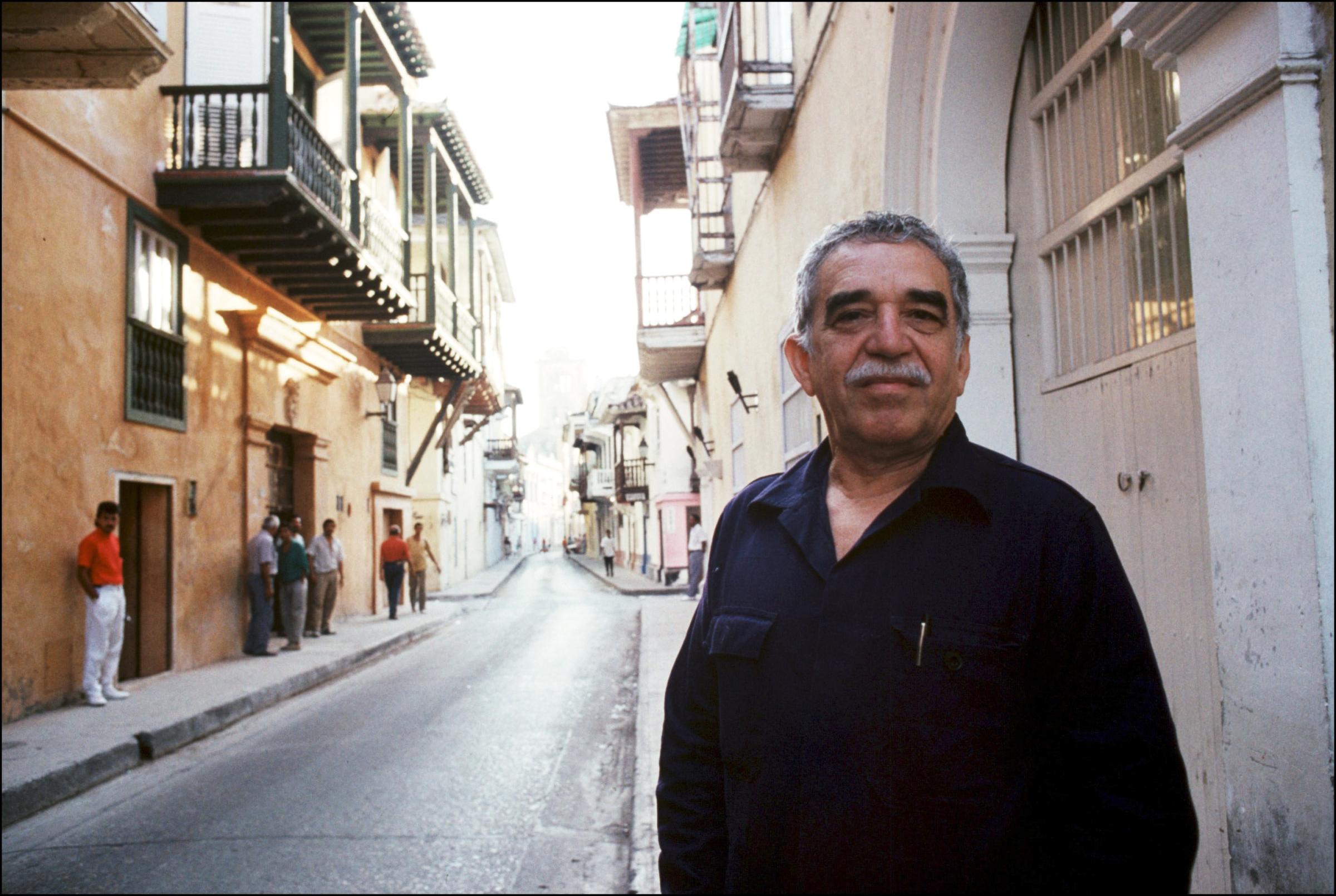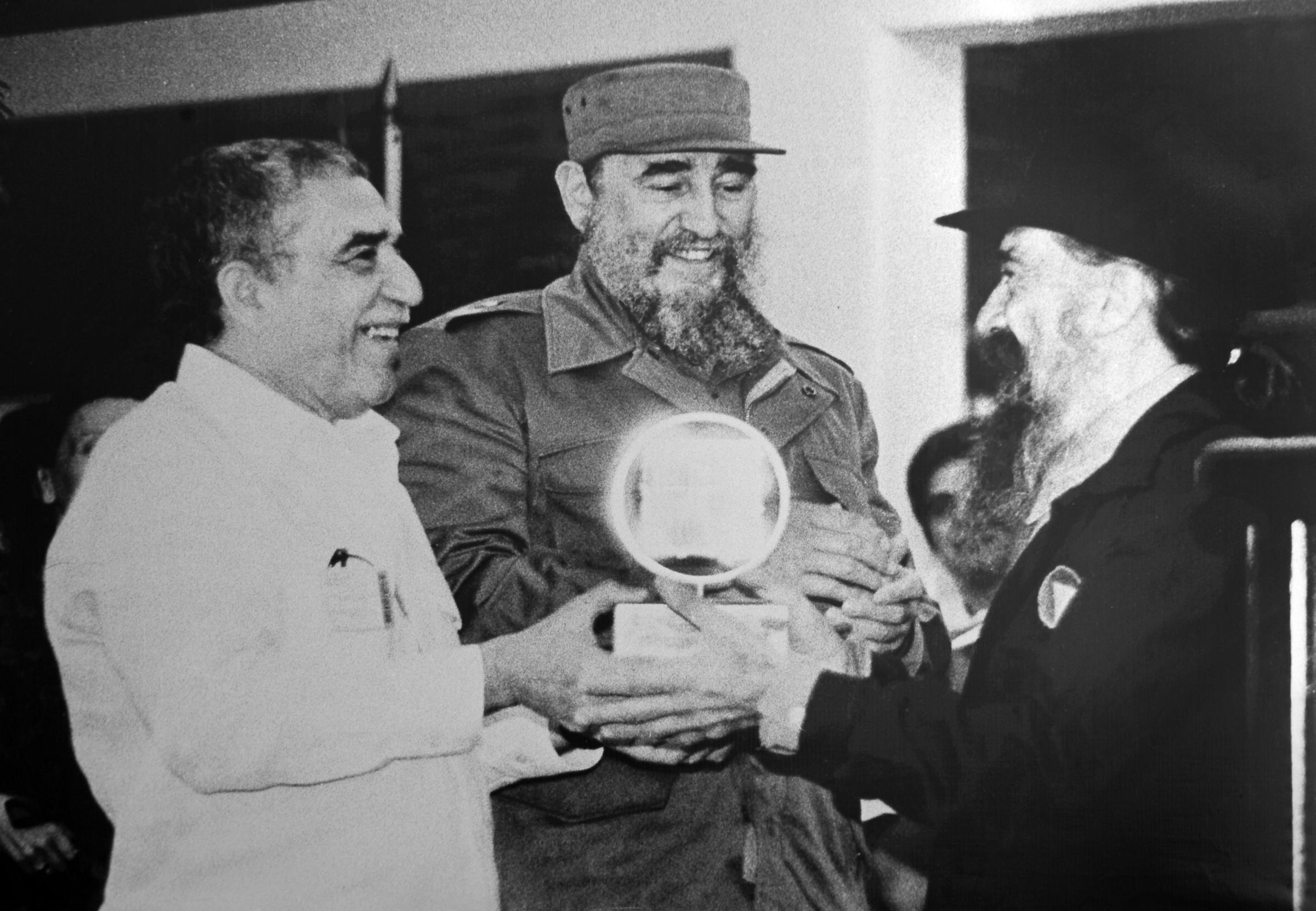
On what would have been his 91st birthday, Google Doodle is celebrating Gabriel García Márquez, or “Gabo,” as the man once called “the greatest Colombian who ever lived” was affectionately known.
In García Márquez’s novels angels fall to Earth and become carnival attractions, magic carpets fly and priests levitate. The Colombian author defined the genre of magical realism, in which the mundane and the fantastic occur with equal plausibility. He said he was inspired by the unbelievability of Latin American history — an illusory Eldorado plagued by conquistadors, despots and revolutions.
“We have had to ask but little of imagination, for our crucial problem has been a lack of conventional means to render our lives believable,” he said in his acceptance speech for the Nobel Prize in Literature, which he won in 1982.

Born in Aracataca, Colombia On March 6, 1927, he was raised by his maternal grandparents. He attributed his gift for storytelling to his grandfather, a hero of the Thousand Days War, when Liberal generals revolted against the ruling Conservatives. García Márquez attributed his fascination with the supernatural to his grandmother’s belief in ghosts, omen and portents.
He showed a passion for writing early on, and studied journalism, as well as law to please his father, at the Universidad Nacional de Colombia in Bogota. After bloody riots and the assassination of a popular presidential candidate led to the closure of his university in 1948, García Márquez quit school to become a journalist.
“I’ve always been convinced that my true profession is that of a journalist. What I didn’t like about journalism before were the working conditions,” he told the Paris Review in 1981.
After more than a decade as a reporter, columnist, foreign correspondent and editor, during which he covered, and by some accounts assisted, in the coup in Venezuela in 1958, García Márquez moved his family to Mexico City and launched into his career as a novelist. In 1967, he published One Hundred Years of Solitude, which catapulted his literary career to an international stage. The book became a touchstone for magical realism, and a defining moment for literature in the 20th century. García Márquez went on to pen more than 25 books, including short-story collections, non-fiction works and screenplays.
Throughout his life, García Márquez, a committed Leftist, remained politically active, considering himself a writer of the revolution. He kindled a close, storied friendship with Cuban leader Fidel Castro, and vocally opposed right-wing leaders like Chile’s General Augusto Pinochet.

García Márquez became a Nobel laureate even before he wrote some of his other prominent works, including Love in the Time of Cholera and Of Love and Other Demons.
Tuesday’s Google Doodle depicts the colorful Amazonian jungle and the magical city of Macondo, brought to live in A Hundred Years of Solitude. Entwined in the Doodle are aspects from García Márquez’s book, such as the city of mirrors, mysterious gypsies and fish made of pure gold.
García Márquez died in his home in Mexico in 2014. He was 87.
More Must-Reads from TIME
- Donald Trump Is TIME's 2024 Person of the Year
- Why We Chose Trump as Person of the Year
- Is Intermittent Fasting Good or Bad for You?
- The 100 Must-Read Books of 2024
- The 20 Best Christmas TV Episodes
- Column: If Optimism Feels Ridiculous Now, Try Hope
- The Future of Climate Action Is Trade Policy
- Merle Bombardieri Is Helping People Make the Baby Decision
Write to Laignee Barron at Laignee.Barron@time.com